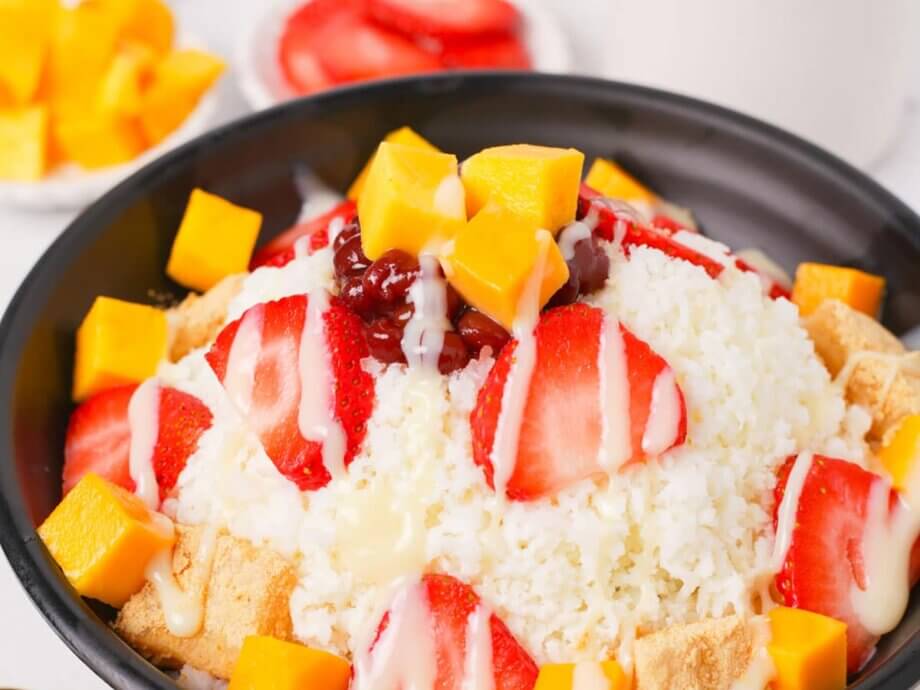The Cool Allure of Bingsu: Korea’s Beloved Summer Dessert
On sweltering summer days in Korea, few treats are as eagerly anticipated as a bowl of bingsu. This mountain of finely shaved ice, adorned with a dazzling array of toppings, is more than just a way to beat the heat—it’s a cultural phenomenon that has evolved over centuries. From its humble beginnings as a simple ice-and-bean concoction to the elaborate, Instagram-worthy creations found in modern dessert cafes, bingsu reflects both Korea’s culinary ingenuity and its deep-rooted traditions.
- The Cool Allure of Bingsu: Korea’s Beloved Summer Dessert
- What Is Bingsu? A Chilled Delight Explained
- The Origins of Bingsu: From Royal Tables to Street Stalls
- Modern Bingsu: A Canvas for Culinary Innovation
- Why Is Bingsu So Popular?
- Bingsu Beyond Korea: A Global Phenomenon
- The Cultural Significance of Bingsu
- How to Enjoy Bingsu: Tips for First-Timers
- In Summary
What Is Bingsu? A Chilled Delight Explained
Bingsu (빙수) is a Korean dessert made from finely shaved ice, traditionally topped with sweetened red beans (pat), condensed milk, and chewy rice cakes. The word “bingsu” literally means “ice water” in Korean, and the dessert’s texture is key: the ice is shaved so finely that it resembles fresh snow, creating a melt-in-your-mouth sensation. Over time, bingsu has become a canvas for creativity, with toppings ranging from fresh fruit and cereals to ice cream and even cheesecake.
How Is Bingsu Made?
The process begins with a block of ice—sometimes made from milk for extra creaminess—which is shaved into delicate flakes using a special machine. The shaved ice is then heaped into a bowl and layered with toppings. Classic bingsu features sweetened red beans (azuki beans), but modern versions might include mango, strawberries, matcha, chocolate, or even savory elements. A drizzle of condensed milk or fruit syrup often finishes the dish, adding richness and sweetness.
The Origins of Bingsu: From Royal Tables to Street Stalls
Bingsu’s history stretches back to the Joseon Dynasty (1392–1897), when ice was a rare luxury. Historical records suggest that government officials and royalty would store ice in special ice houses called “seokbinggo” to use during the hot summer months. Early versions of bingsu were simple: shaved ice served with fruit or honey, reserved for the elite.
As ice became more accessible in the 20th century, bingsu spread to the general public. The addition of sweetened red beans (pat) gave rise to “patbingsu,” which became the standard version enjoyed by generations of Koreans. Patbingsu is still beloved today, especially among older generations who remember it as a nostalgic childhood treat.
Modern Bingsu: A Canvas for Culinary Innovation
In recent decades, bingsu has undergone a dramatic transformation. The rise of dessert cafes in Korea’s urban centers has fueled a wave of experimentation, with chefs and entrepreneurs introducing new flavors, textures, and presentations. Today, bingsu can be found in countless varieties, from the traditional to the avant-garde.
Popular Bingsu Varieties
- Patbingsu: The classic version, featuring sweetened red beans, rice cakes, and condensed milk.
- Fruit Bingsu: Topped with fresh seasonal fruits like mango, strawberries, or melon, often with fruit syrup or puree.
- Injeolmi Bingsu: Features chewy rice cakes (injeolmi) and roasted soybean powder for a nutty, earthy flavor.
- Green Tea (Matcha) Bingsu: Incorporates matcha powder and sometimes red beans or mochi for a Japanese-inspired twist.
- Chocolate or Coffee Bingsu: Uses chocolate syrup, cocoa powder, or espresso for a decadent, modern take.
- Luxury Bingsu: High-end cafes offer versions with premium ingredients like cheesecake, macarons, or gold leaf, often presented in elaborate, photogenic arrangements.
Why Is Bingsu So Popular?
Bingsu’s enduring popularity can be attributed to several factors. First, its refreshing nature makes it the perfect antidote to Korea’s hot, humid summers. Second, its versatility allows for endless customization, appealing to a wide range of tastes and dietary preferences. Finally, bingsu is a social dessert—often served in large bowls meant to be shared among friends or family, making it a centerpiece for gatherings and celebrations.
In recent years, the rise of social media has also played a role. The visually stunning presentations of modern bingsu—towering piles of fruit, vibrant colors, and whimsical garnishes—make it a favorite subject for Instagram and other platforms, further fueling its popularity among younger generations.
Bingsu Beyond Korea: A Global Phenomenon
While bingsu is deeply rooted in Korean culture, its appeal has spread far beyond the country’s borders. Korean dessert cafes have opened in cities around the world, introducing international audiences to the joys of shaved ice. In places like Los Angeles, New York, and London, bingsu is now a trendy treat, often adapted to local tastes with unique toppings and flavors.
Bingsu also shares similarities with other shaved ice desserts from around Asia, such as Japan’s kakigori, Taiwan’s baobing, and the Philippines’ halo-halo. Each of these desserts reflects its own cultural influences, but all share the same basic principle: transforming simple ice into a delightful, customizable treat.
The Cultural Significance of Bingsu
Bingsu is more than just a dessert—it’s a symbol of Korean hospitality, creativity, and seasonal tradition. Sharing a bowl of bingsu is a cherished summer ritual for many families and friends, evoking memories of childhood and community. The dessert’s evolution also mirrors broader trends in Korean society, from the democratization of luxury goods to the embrace of global culinary influences.
Expert Perspectives
Food historian Dr. Kim Ji-young explains,
“Bingsu’s transformation from a royal delicacy to a popular street food reflects Korea’s rapid modernization and changing tastes. Today, it serves as both a nostalgic comfort food and a platform for culinary innovation.”
Meanwhile, cafe owner Park Min-soo notes,
“Customers love the variety. Some come for the classic patbingsu, while others want to try something new every time. Bingsu is about sharing and enjoying the moment together.”
How to Enjoy Bingsu: Tips for First-Timers
If you’re new to bingsu, here are a few tips to make the most of your experience:
- Start with the classics: Try patbingsu or a simple fruit bingsu to appreciate the traditional flavors.
- Share with friends: Bingsu portions are often generous, making them perfect for sharing.
- Mix it up: Don’t be afraid to stir the toppings into the ice for a balanced bite.
- Explore new flavors: Many cafes offer seasonal or limited-edition varieties—be adventurous!
In Summary
- Bingsu is a quintessential Korean shaved ice dessert with a rich history and diverse modern variations.
- Originating as a royal treat, bingsu became widely popular in the 20th century with the addition of sweetened red beans.
- Modern bingsu features a wide range of toppings, from fresh fruit to luxury ingredients, and is a staple of Korean dessert cafes.
- The dessert’s popularity has spread globally, with Korean cafes introducing bingsu to international audiences.
- Bingsu is both a refreshing summer treat and a symbol of Korean culture, creativity, and community.




